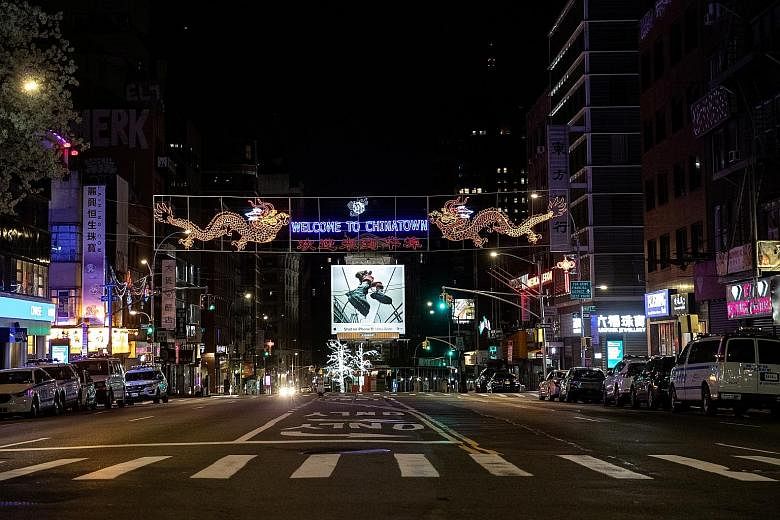NEW YORK • If the rate of growth in coronavirus cases in the New York metro area continues, it will suffer a more severe outbreak than those experienced in Wuhan, China, or the Lombardy region of Italy.
There is no guarantee, of course, that current trends will continue. What has happened up to this point cannot be used to predict what will happen next. It is possible that social distancing will soon slow or arrest the growth of cases.
But what can be said is that the New York metro area has had less success in flattening the curve, at this point in its outbreak, than Wuhan or the Lombardy region did at the same point in theirs.
And some other American metropolitan areas appear to be on a similar path.
In the early stages of an outbreak, the population size does not matter - one infected person will probably infect a few people, whether that person lives in a metropolitan area of 100,000 or one of 10 million.
But as an epidemic progresses, the number of cases per capita can provide a good measure of the prevalence of coronavirus in a community. Per capita measurements also give a sense of how strained a community's healthcare system has become.
Perhaps it was inevitable that New York City and its suburbs would become an epicentre of the coronavirus epidemic in the United States. The population density, reliance on public transportation and constant influx of tourists - all would seem to make the metropolitan area a target.
But to stop the virus, scientists have to figure out which factors played a greater role than others. As it turns out, that is not so simple.
"We have more speculation than facts," said Dr Arnold Monto, professor of epidemiology and global health at the University of Michigan.
More than 20,000 New York City residents have tested positive for the virus so far - nearly a third of all confirmed cases in the nation.
The prevalence in New York and the areas close to it is far greater than anywhere else in the country. The problem is that so little is known about the spread of this new virus that it is hard to draw conclusions about whether New York is unique or a harbinger of things to come elsewhere.
Many New Yorkers live in high-rises. Sidewalks are crowded. Subways can be jammed. The city has 27,000 residents per sq mile (2.6 sq km), far surpassing the second-densest city, San Francisco, with 18,000 per sq mile.
But, noted Dr Jon Zelner, an epidemiologist at the University of Michigan, other cities such as Tokyo, Seoul and Taipei are also very dense and have not seen the same kind of explosive growth.
The limited availability of testing in some places means that many people with coronavirus will not be counted among the confirmed cases.
And the varying rates of testing across states and countries make it hard to compare the number of confirmed cases in different regions.
To assess the possible future of the outbreak, it is helpful to look not just at the number of cases but also at how quickly they are increasing.
Public health officials have been talking about the value of social distancing measures as a way to "flatten the curve" of the epidemic.
Such a flattening would mean that the rates are falling, eventually to zero.
New York's current infection growth rate is just over 30 per cent, suggesting that its curve remains quite steep, and that the disease is continuing to spread rapidly throughout the region.
NYTIMES












